As the sun sets over South Beach, art deco neon signs flicker to life and conga drums start to thrum in Little Havana’s open-air bars. Music isn’t just entertainment here but it’s the city’s cultural heartbeat, a living heritage shaped by the diverse communities that call Miami home. This guide reveals how Miami’s nights, alive with Latin rhythms and global DJs, reflect the cultural heartbeat of the city.
Jump to: Latin & Caribbean Beats • Evolution of Miami Nightlife • Glamour and Global Beats • Wynwood Art • Stage & Dance Festivals • Night Comes Alive • FAQ
TL;DR – Miami’s Nightlife Identity
- Latin and Caribbean rhythms (salsa, bachata, reggae, kompa) shape Miami’s cultural soundscape
- Nightlife evolved from 1950s supper clubs to 1990s South Beach superclubs to today’s EDM festivals
- South Beach offers glamorous clubs, Wynwood blends art and nightlife, Little Havana keeps salsa alive
- Global stage: Ultra Music Festival and Miami Music Week put the city at the center of dance culture
- Music and nightlife are cultural identity in Miami. Vibrant, diverse, and global
More on Miami:
Latin and Caribbean Beats
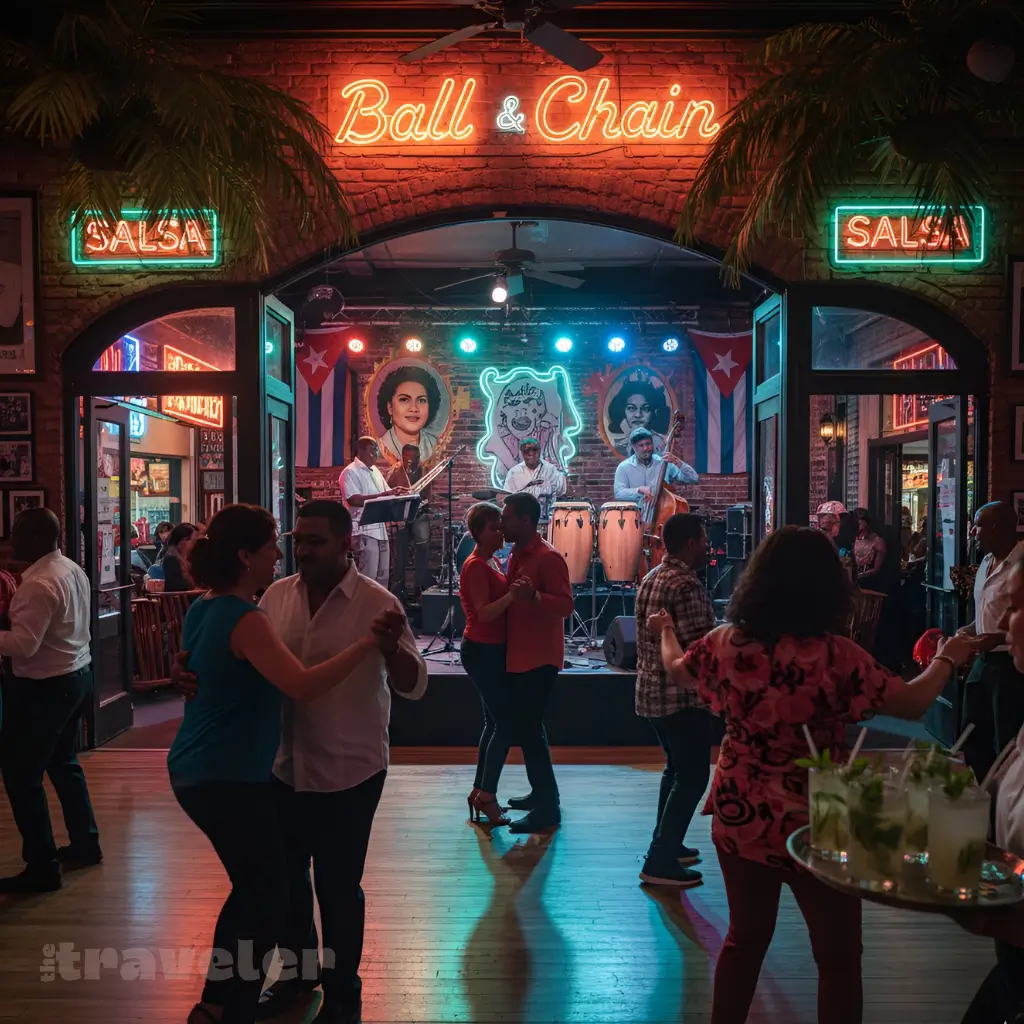
Miami has long been a hub for Latin music in the United States , thanks to its rich tapestry of Latino and Caribbean communities. Cuban immigration in the 20th century brought Afro-Cuban rhythms like rumba and conga, now essential sounds in Miami’s nightlife. Strolling down Calle Ocho in Little Havana, you might hear a classic salsa track spill from a doorway – couples dancing the salsa under photos of legends who played there decades ago.
In fact, the famous Ball & Chain club on Calle Ocho first opened in 1935 and has hosted icons from Celia Cruz to Billie Holiday, symbolizing Miami’s musical crossroads. Today, this storied venue still offers live Latin jazz and salsa daily, preserving an authentic Cuban atmosphere that makes visitors feel as if they’ve stepped into Havana itself.
Other immigrant groups added their own flavors to Miami’s soundtrack. From Dominican merengue and bachata to Colombian cumbia, nearly every Latin American rhythm finds an audience here. Miami’s sizable Haitian community pumps out kompa dance tunes, while Jamaican and Trinidadian enclaves contribute reggae, soca, and calypso beats. On any given night, you might encounter a Dominican bachata party in Allapattah or a reggae jam in Liberty City.
This melting pot of music reflects the city’s multicultural soul. Even modern Latin genres have flourished – the rise of reggaeton, for example, swept Miami’s clubs in the 2000s, mirroring its explosion globally. (The record-breaking hit “Despacito” – a reggaeton-pop blend – amassed over a billion YouTube views in just months, showing how these Miami-favorite sounds went mainstream.) From Gloria Estefan’s 1980s Cuban-infused pop (“Conga” put Miami Sound Machine on the map ) to Pitbull’s Spanglish party anthems, Latin music has been the backbone of Miami’s identity, infusing the city’s nightlife with passion and sabor (flavor).
Evolution of Miami Nightlife
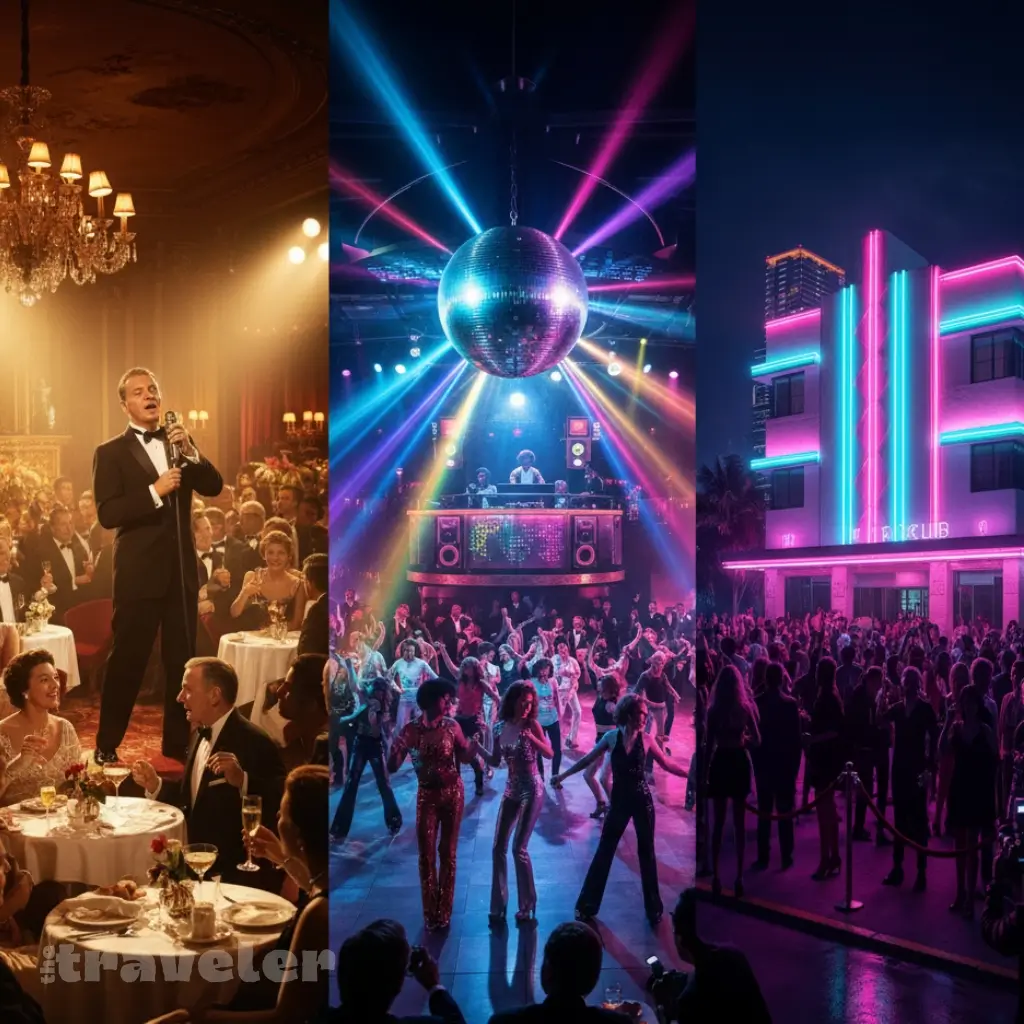
Miami’s nightlife has evolved dramatically over the decades, mirroring the city’s growth and changing cultural tides. In the post-WWII era, glitzy supper clubs and hotel lounges were the hot spots – venues like the Copacabana at the Fontainebleau Hotel hosted stars such as Frank Sinatra and Sammy Davis Jr., giving Miami Beach a glamorous reputation as early as the 1950s.
By the 1970s, a new sound took over dance floors: disco. Homegrown acts like KC and the Sunshine Band got crowds boogying with funky dance hits, and a local Miami label even produced one of the first disco #1 hits. The late ’70s saw Miami’s club scene thrive on flashy outfits and mirror balls, setting the stage for the city’s enduring love affair with dance music.
The 1980s brought growing pains – economic struggles and crime cast a shadow, even as Miami developed its own edgy sounds. This era gave birth to Miami bass, a high-energy hip-hop style thumping out of car subwoofers and clubs across the city. At the same time, the seeds of Miami’s global party image were planted. In 1985, the city began hosting the Winter Music Conference (WMC) – a week-long electronic music meetup that drew DJs and industry folks from around the world.
By the early ’90s, as Miami rebounded, South Beach was reborn as a celebrity-studded nightlife playground. Legendary clubs pulsed until dawn and the city’s once-faded Art Deco district became synonymous with glamour and excess. Locals recall that in the ’90s “there was a venue on every block… Celebs, DJs and dancing and more dancing” defined South Beach nights. It was a resurgence indeed – fueled by fashion, film (Miami Vice, anyone?), and an influx of international jet-setters.
The emergence of electronic dance music (EDM) in the 1990s cemented Miami’s status as a party capital. Techno and house beats found an eager audience in Miami’s multicultural crowd, who embraced the new sounds and made them their own. Local DJs and producers gained fame, and new superclubs sprang up to host them. By the end of the ’90s, Miami was known as one of the world’s top destinations for EDM.
The city even changed laws to accommodate the demand – allowing certain clubs to stay open 24 hours on weekends, which only attracted more revelers and top-tier DJs. What began with underground raves and warehouse parties in the ’80s blossomed into full-blown mainstream extravagance by the 2000s. Today’s Miami nightlife carries all these layers of history: you can sip a mojito in a vintage bar that hosted 1940s jazz greats, then dance until sunrise to cutting-edge EDM at a modern megaclub – all in one night.
Glamour and Global Beats
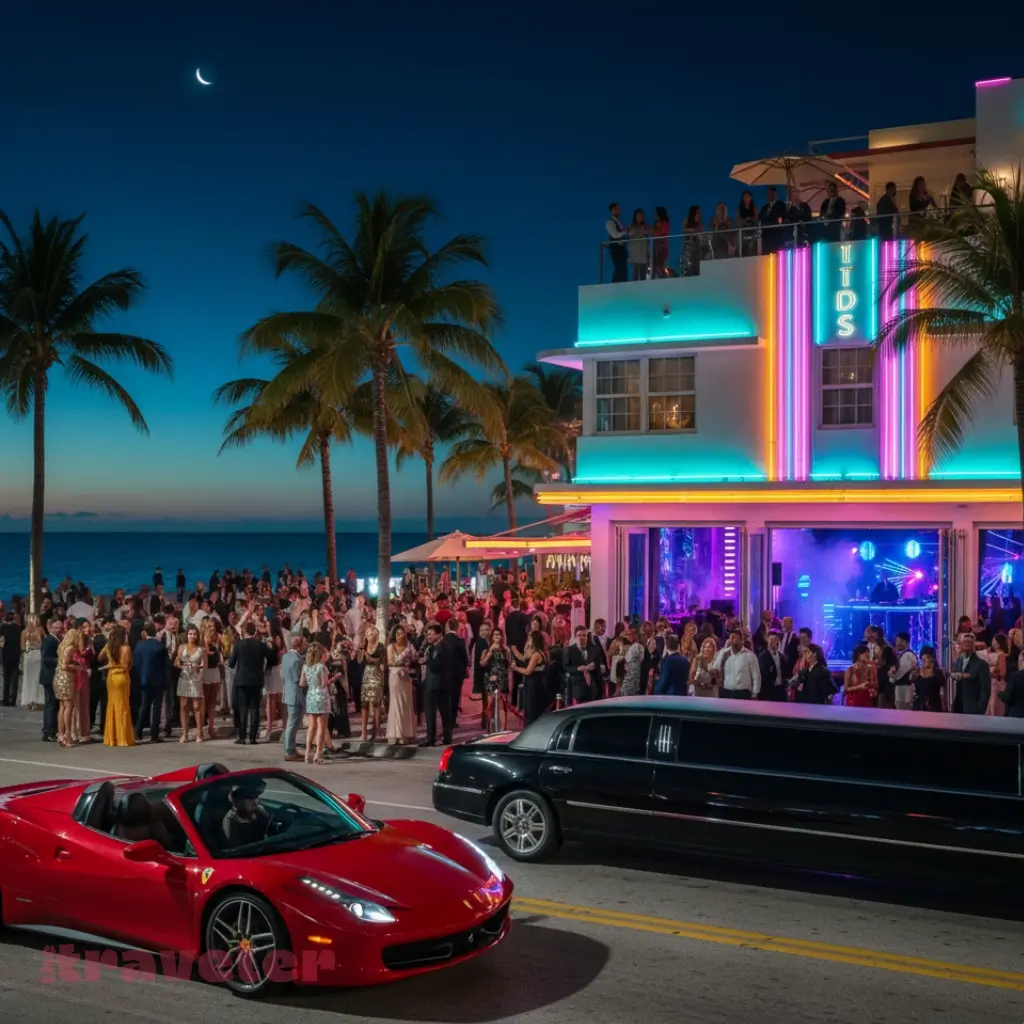
South Beach by night, where Art Deco landmarks and palm trees set a stylish stage for Miami’s nightlife. South Beach is the iconic heart of Miami’s nightlife, famed for its blend of tropical elegance and pulsating energy. Along Ocean Drive and Collins Avenue, historic Art Deco hotels glow with neon signs as taxis and exotic cars cruise by.
The scene is both upscale and uninhibited. Glamorous rooftop lounges overlook the Atlantic, while below, velvet-roped clubs fill with an international mix of models, celebrities, and wide-eyed travelers ready to dance. By midnight, the entire district feels like one big party.
The music in South Beach’s clubs echoes Miami’s cultural mix but with a distinctly cosmopolitan flair. At spots like LIV or Mango’s Tropical Café, you might hear a Latin remix segue into a high-octane EDM drop, reflecting the city’s dual love for salsa and big-room house music. South Beach’s clubs have long drawn world-famous DJs – it’s not unusual to find top European DJs spinning here on any given weekend.
In the 1990s, venues such as Club Space and Mansion earned global reputations by hosting first-class international DJs , and that legacy continues. The atmosphere is one of excess and excitement: VIP sections populated by A-listers, dance floors packed with people from all over the world, and the air perfumed by the ocean breeze and champagne.
Yet amidst the glitz, South Beach retains a sense of place. The art deco architecture and lit-up palm trees remind you that this is Miami – a city that effortlessly blends American pop culture with Latin spice. On some nights, you might catch a live Latin band at a lounge or a reggae set at a beachfront bar, even as nearby superclubs thump with bass.
It’s this juxtaposition of cultures that gives South Beach its edge. Whether you’re dressed to the nines for a trendy nightclub or bar-hopping in flip-flops along the sidewalk cafés, the South Beach nightlife experience is ultimately about freedom and fusion. As a local slogan once put it, “the rhythm is gonna get you” – and in South Beach, it certainly does.
Wynwood Art Meets Nightlife
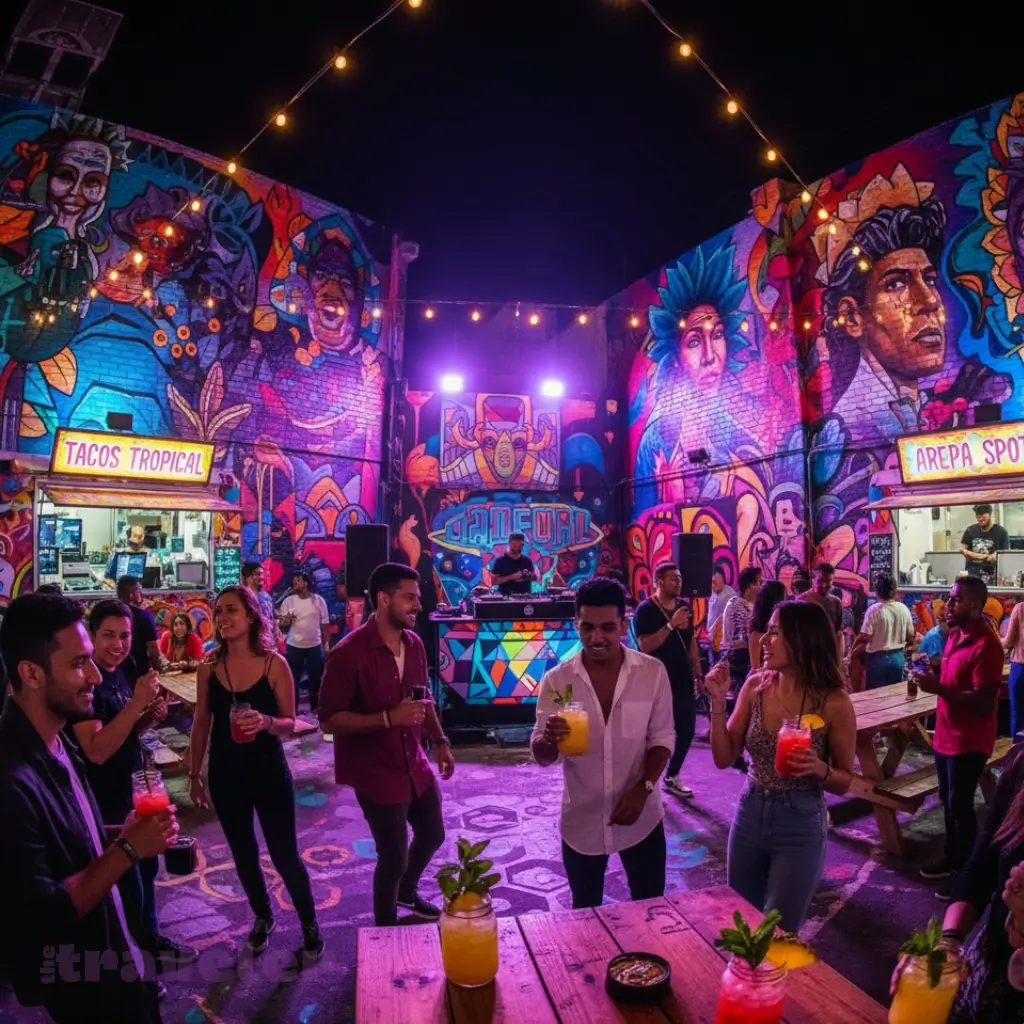
If South Beach is about high glamour, Wynwood is about creative energy. By day, Miami’s Wynwood Arts District is famous for its colorful street murals and hip galleries; by night, those same graffiti-splashed blocks transform into one of the city’s trendiest nightlife hubs. The vibe here is distinct: youthful, artsy, and unpretentious. Instead of velvet ropes, Wynwood offers open-air bars adorned with murals and breweries tucked into repurposed warehouses.
Walking through Wynwood on a Saturday night, you’ll see the walls themselves seemingly come alive – vibrant artworks illuminated by neon lights and the motion of dancing silhouettes. Many venues blur the line between club and art installation, featuring street-art decor and creative themes that give the whole neighborhood a laid-back block party feel.
The music scene in Wynwood is as diverse as its art. You can turn one corner and find a DJ pumping out electronic dance beats in a courtyard, and turn another to find a patio bar throbbing with reggaeton and Latin trap music. In fact, Wynwood has become a go-to area for Latin nightlife lately – spots like El Patio or The Dirty Rabbit are beloved for their perreo (reggaeton dance) nights and tropical ambiance. At the same time, Wynwood hosts techno clubs, live rock bands, and everything in between.
One venue, for example, might have a salsa band early in the evening and a house DJ later at night. The variety means there’s something for everyone, and often all under one roof. It’s not unusual for a Wynwood night to start with sipping craft cocktails beside a wall mural, then segue into dancing to Afro-Caribbean drums or grooving to an underground DJ set as midnight approaches.
What truly sets Wynwood’s nightlife apart is its creative soul. Bars double as art galleries, and breweries host poetry slams or indie film screenings. During monthly art walks, the party spills into the streets with pop-up DJs and food trucks between the murals. Even the drinks are inventive – mixologists here incorporate local flavors and playful presentations, as imaginative as the art on the walls.
The blending of art, music, and community in Wynwood encapsulates Miami’s cultural identity in a fresh way. It’s a neighborhood where a night out can mean dancing under a graffiti mural or chatting with local artists over a beer, all while Latin beats and electronic grooves unite the crowd. In Wynwood, Miami shows that nightlife can be both a celebration and an art form in itself.
Global Stage And Dance Festivals
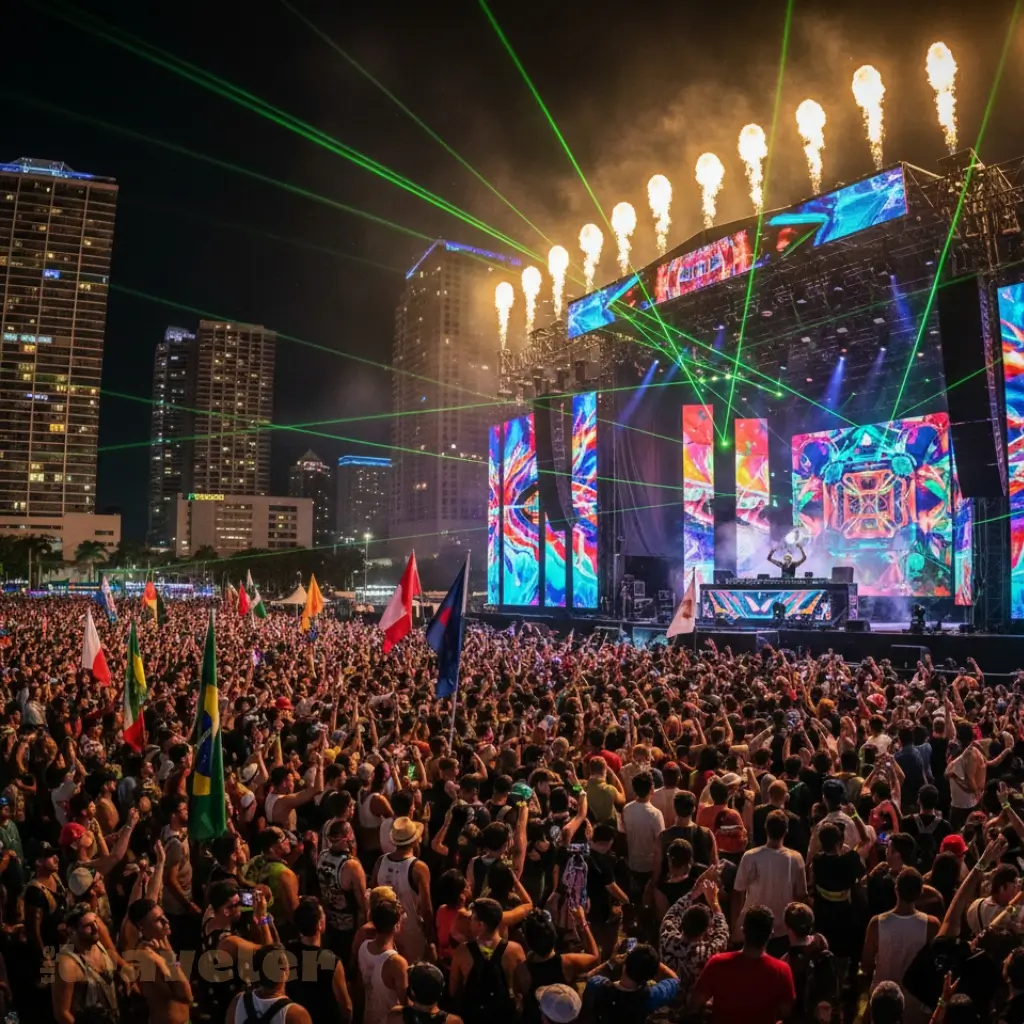
Miami isn’t just another city on the party circuit – it’s a global stage for DJs and music festivals, attracting dance music fans and artists from every corner of the world. Every March, the city’s downtown waterfront erupts in a spectacle of lights and sound for the Ultra Music Festival, one of the premier electronic dance festivals on the planet. Over a long weekend, top DJs and tens of thousands of revelers converge on Miami for Ultra’s thundering performances.
The festival’s growth has been staggering: what began as a small beachside rave in 1999 is now a massive production that draws over 150,000 attendees from around the globe. Mega-stages rise against the skyline, superstar DJs like Armin van Buuren or Tiësto drop their biggest hits, and the crowd becomes a sea of waving flags and ecstatic dancing – a true United Nations of nightlife.
A headlining moment at Ultra Music Festival in Miami, where world-famous DJs electrify the night and a sea of fans moves to the beat. Ultra is the crown jewel, but it’s part of a larger Miami Music Week that turns the city into an all-hours dance mecca. The Winter Music Conference, started in 1985, still runs concurrently, bringing industry professionals and up-and-coming talent to town. All week, pop-up parties and poolside DJ sets take over hotels and clubs – it’s not unusual to dance from afternoon into sunrise during this time.
Miami’s club scene thrives on these events; venues often extend their hours (some never close at all on festival weekends) and feature lineups of international DJs spinning everything from deep house to techno. In the 1980s, keeping clubs open until 5 AM was novel – now, it’s expected that Miami will party till dawn.
Even outside of festival season, Miami’s clubs rank among the world’s best, regularly hosting touring DJs on their global circuits. The city’s reputation is such that being a resident DJ in Miami – or landing a coveted weekend slot at a superclub – is a badge of honor in the dance music world. The music and nightlife industry also feed into Miami’s economy and cultural cachet; massive events like Ultra have generated hundreds of millions in economic impact while branding Miami as an EDM capital.
But beyond the numbers, it’s the intangible vibe that stands out: the feeling of unity as a crowd of strangers from different countries all jump in sync to the drop of a beat, the tropical night air filled with music that transcends language. This is Miami’s gift to the world party scene – an open invitation to experience a city where music, in all its forms, is the lifeblood of cultural identity.
Where the Night Comes Alive
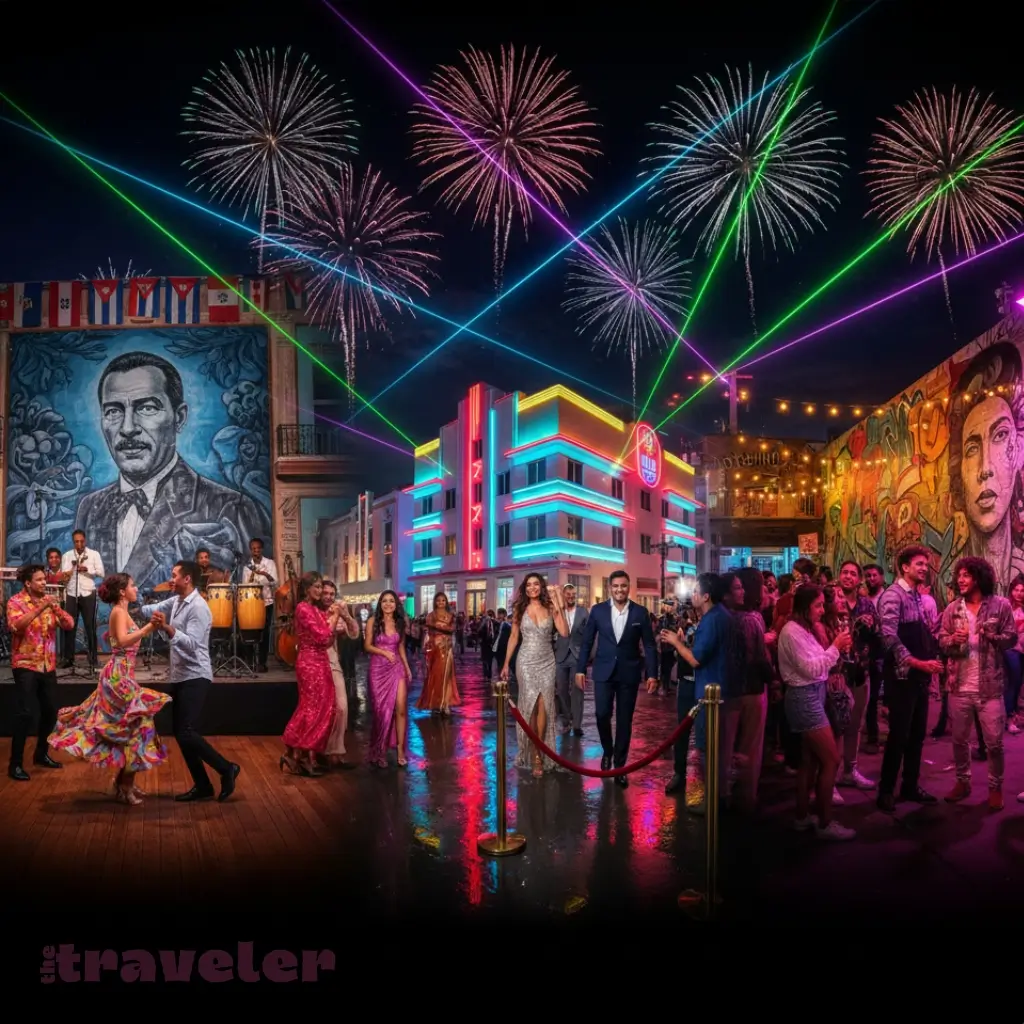
In Miami, the phrase “the city that never sleeps” isn’t just a cliché – it’s a cultural truth. Nightlife here is more than late-night fun; it’s an expression of Miami’s diverse heritage and its role as a crossroads of the Americas.
Every rhythm tells a story: the salsa at a Little Havana bar speaks to Cuban resilience and joy, the thumping bass on South Beach echoes decades of reinvention and celebrity sparkle, and the genre-blending tracks in Wynwood reflect a young generation shaping new traditions.
When you explore Miami’s music and nightlife, you’re not just having a night out – you’re immersing yourself in what makes this city unique. The sounds of Miami after dark – the Spanish lyrics over a reggaeton beat, the DJ’s shout-out to “¡Mi Gente de Miami!”, the clink of mojito glasses and the shuffle of dancing feet – these are the soundtrack of a city proudly defined by its nightlife.
In Miami, cultural identity isn’t confined to museums or monuments; it dances in the streets, sings from the clubs, and invites you to join the celebration, one unforgettable night at a time.
FAQ
What music styles shaped Miami?
Salsa, merengue, bachata, reggae, EDM, and Miami bass all influence the city’s nightlife.
Where is the best place for salsa in Miami?
Calle Ocho in Little Havana, with venues like the historic Ball & Chain.
What is Miami’s biggest music festival?
Ultra Music Festival, attracting over 150,000 fans each March during Miami Music Week.
How has nightlife evolved in Miami?
From 1950s supper clubs to 1990s South Beach superclubs, to today’s EDM festivals and creative Wynwood bars.
